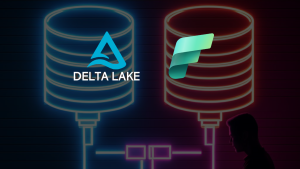Fabric in Production
This is a placeholder blog which will be revisted many, many times over the coming months. This is a list of features for Fabric that I feel need to be in GA for it to be rolled out into production. I know that “being production ready” can be very subjective, this is my own list. But for organisations out there that wish to adopt Fabric, how much are you willing to compromise in terms of these features?
The comments section is open so please add in anything you feel is relevant when being able to productionise a solution.
Changelog
- Initial blog: 13th June 2023.
- Updated: 2nd November 2023
- Database Projects support for Warehouses in Azure Data Studio
- Deployment Pipelines support for Lakehouse and Notebook items
Features
| Feature | Available | Date |
|---|---|---|
| Out of private preview and into GA (General Availability) | No | |
| Private Endpoints / VNet Connectivity | ||
| – Connection to external services | No | |
| – Inbound to Fabric from external sources | No | |
| Database Projects for Source Control (and deployment?) | ||
| – Warehouses | Yes | Sep-23 |
| – Lakehouses (how would this work? table definitions stored…) | No | |
| Git/Source Control integration | ||
| – Branch switching in workspaces etc | No | |
| – Fabric items | No | |
| – Power BI items | Yes | |
| Deployment Pipelines | ||
| – Fabric items | Partial | Nov-23 |
| Direct Lake | ||
| – Models (datasets) created in Power BI Desktop | No | |
| – Models (datasets) connected to Warehouses | No | |
| Security – Access Permissions | ||
| – Domains | No | |
| – Workspaces | Yes | |
| – Workspace Items | No | |
| Full DML/DDL support in Warehouses | ||
| – Identity (auto-increment for surrogate keys) | No | |
| – Merge | No | |
| APIs for Automation | ||
| – Scale/Pause/Resume Azure F SKU capacity | Undocumented | |
| – Deployment | No | |
| ISO 27001 and SOC 2 certified | ||
| – Power BI items | Yes | |
| – Fabric items | No |
Ideas Site
For adding ideas and suggestions via Microsoft, use the Ideas site here.






Feel free to leave comments about what you feel is important to be able to get Fabric into production.
Hi Andy,
Regarding “Scale/Pause/Resume Azure F SKU capacity” there is actually already APIs, though a bit hidden 🙂
You can the APIs in action in the helper code that I have provided at https://github.com/nocsi-zz/fabric-capacity-management/
/Kasper
Great list!
One minor thing tough…
I was told workspace artifacts are now called workspace items..
Thanks Renato, blog updated!
I will be interested to know how to design and manage dev/test/prod envs in Fabric?
Check this out from a high-level perspective https://www.serverlesssql.com/wp-content/uploads/2023/06/Domains-Architecture.png
Create Domains in Fabric to separate business units/depts. Then use separate workspaces in those domains to separate dev/test/prod, with seperate Fabric capacities created and assigned to the relevant workspaces. EG a dev & uat Azure F SKU Fabric capacity associated with all dev and uat workspaces, while Prod is on its own capacity.
I’ve got a video coming out in a couple of days about this – check out https://www.youtube.com/@DatahaiBI